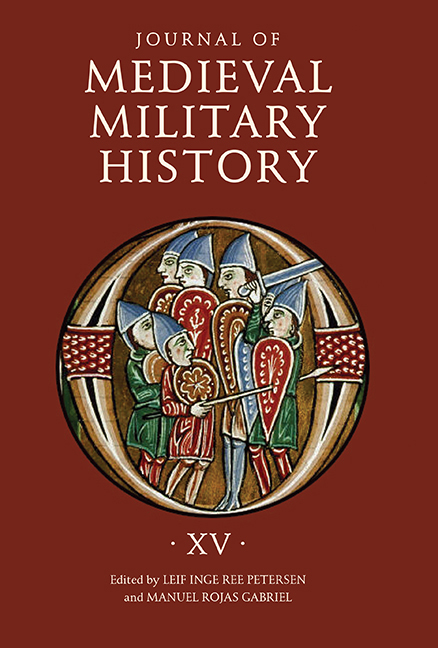Book contents
- Frontmatter
- Dedication
- Contents
- List of Illustrations
- Preface
- 1 Later Roman Grand Strategy: The Fortification of the urbes of Gaul
- 2 In Search of Equilibrium: Byzantium and the Northern Barbarians, 400–800
- 3 Evolving English Strategies during the Viking Wars
- 4 Norman Conquests: A Strategy for World Domination?
- 5 The Papacy and the Political Consolidation of the Catalan Counties, c. 1060–1100: A Case Study in Political Strategy
- 6 Alfonso VII of León-Castile in Face of the Reformulation of Power in al-Andalus, 1145–1157: An Essay in Strategic Logic
- 7 The Treaties between the Kings of León and the Almohads within the Leonese Expansion Strategy, 1157–1230
- 8 A Strategy of Total War? Henry of Livonia and the Conquest of Estonia, 1208–1227
- 9 The English Longbow, War, and Administration
- List of Contributors
- Journal of Medieval Military History
- De Re Militari and the Journal of Medieval Military History
3 - Evolving English Strategies during the Viking Wars
Published online by Cambridge University Press: 21 August 2019
- Frontmatter
- Dedication
- Contents
- List of Illustrations
- Preface
- 1 Later Roman Grand Strategy: The Fortification of the urbes of Gaul
- 2 In Search of Equilibrium: Byzantium and the Northern Barbarians, 400–800
- 3 Evolving English Strategies during the Viking Wars
- 4 Norman Conquests: A Strategy for World Domination?
- 5 The Papacy and the Political Consolidation of the Catalan Counties, c. 1060–1100: A Case Study in Political Strategy
- 6 Alfonso VII of León-Castile in Face of the Reformulation of Power in al-Andalus, 1145–1157: An Essay in Strategic Logic
- 7 The Treaties between the Kings of León and the Almohads within the Leonese Expansion Strategy, 1157–1230
- 8 A Strategy of Total War? Henry of Livonia and the Conquest of Estonia, 1208–1227
- 9 The English Longbow, War, and Administration
- List of Contributors
- Journal of Medieval Military History
- De Re Militari and the Journal of Medieval Military History
Summary
The history of middle and late Saxon England was shaped by the Viking invasions and the military responses of English kings, in particular, those of the two kings who have become respectively bywords for success and failure: Alfred the Great and Æthelred II “Unræd.” Thirty years have passed since Simon Keynes in an influential article ruled direct comparisons of the two “out of court,” and warned against the temptation “to ask […] why [Æthelred] failed where Alfred had succeeded.” Keynes makes a cogent argument against judging “one king in the light of the other,” aptly pointing out the disparate quality of the sources that have survived for the two men's reigns. Alfred is unique among Anglo-Saxon rulers in the quantity and quality of the sources we have for his reign, much of which originated in his court, whereas Æthelred was less fortunate in the chronicler of his reign, who wrote in the wake of defeat and under the shadow of his declining posthumous reputation. But I disagree with Keynes that the military challenge each faced, and their responses to those threats, are not comparable.
The thesis of this paper will not surprise those familiar with my previous work, namely that Alfred's success was based on his ability to plan strategically on a grand scale, and that Æthelred II's failure was due, at least in part, to his and his advisors’ inability to develop a coherent strategy against a similar threat. Alfred developed and expanded the military institutions he inherited into a new civil defense system that represented a defense-in-depth strategy tailored to meet the particular threat offered by the Great Heathen Army. The threat that Æthelred II faced between 980 and 1016 was in many respects similar, as were some of the main elements in his strategic responses. He too refurbished and constructed burhs and forts, strove to improve the effectiveness of royal armies, and ordered the construction of a royal fleet. As did Alfred, Æthelred II and his advisors understood the Viking threat as a divine punishment for sins, and, like Alfred, attempted to appease God by a program of spiritual reform. The strategic responses of both kings, moreover, evolved along with the changing threat posed by the Viking invaders. But in the end, Æthelred II failed. His responses were piecemeal and ad hoc and, ultimately, ineffective.
- Type
- Chapter
- Information
- Journal of Medieval Military HistoryStrategies, pp. 68 - 90Publisher: Boydell & BrewerPrint publication year: 2017

